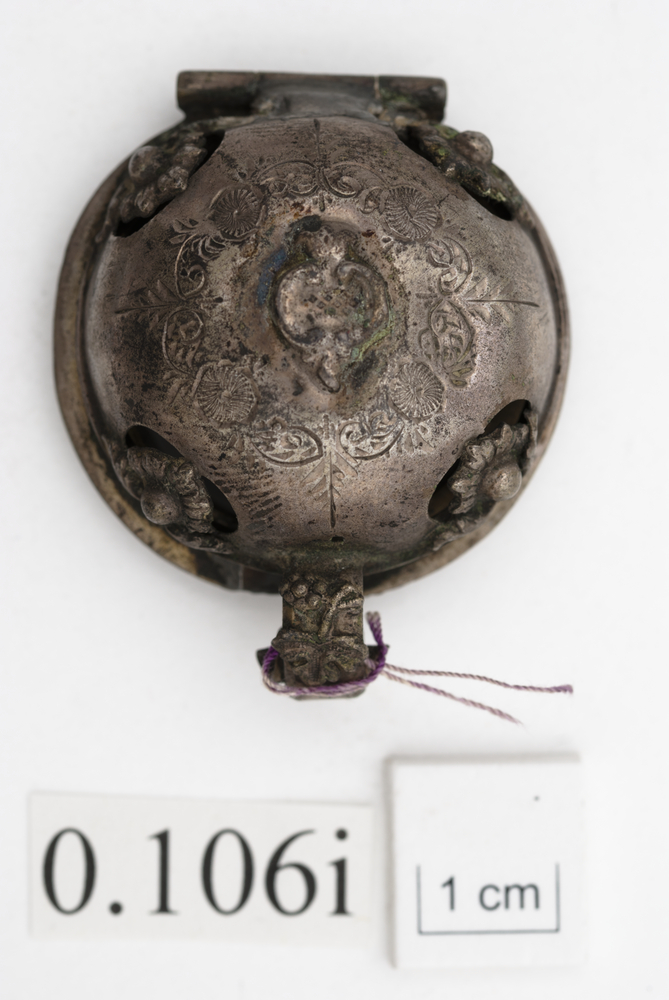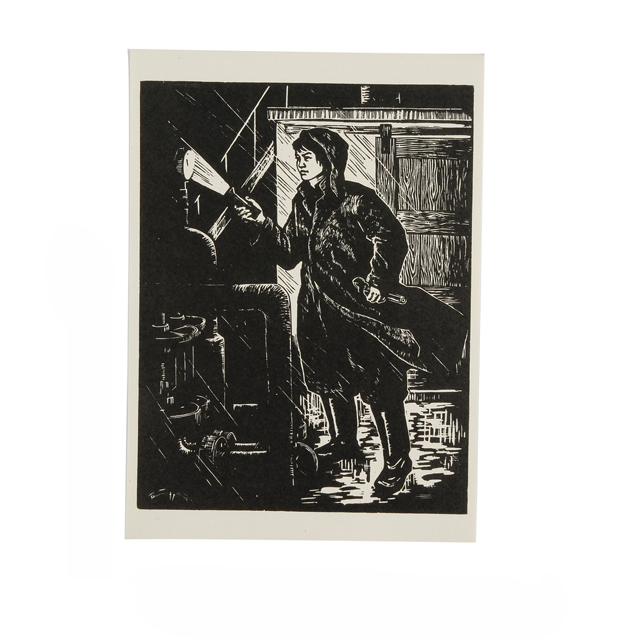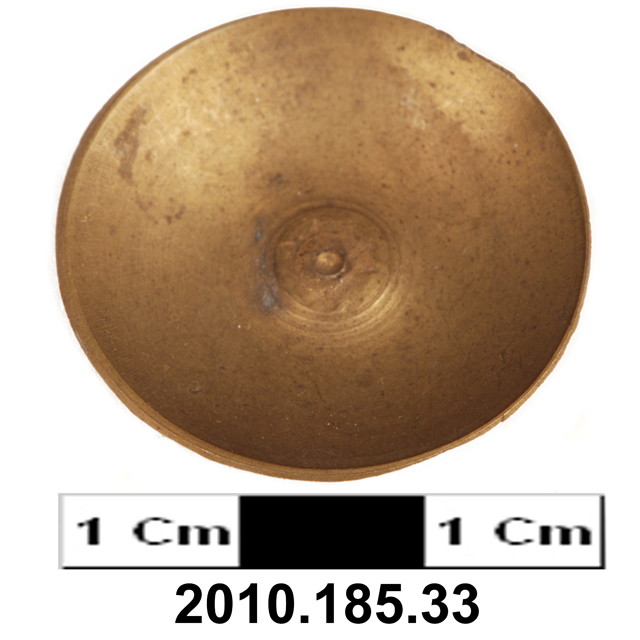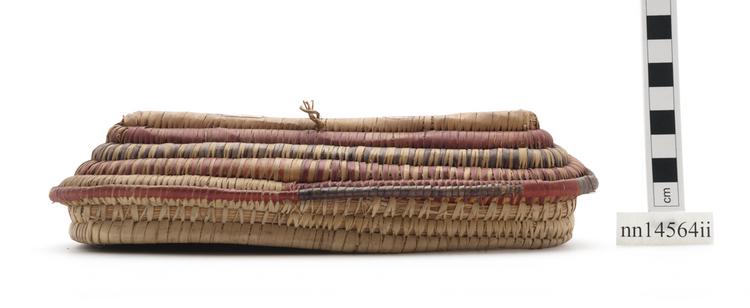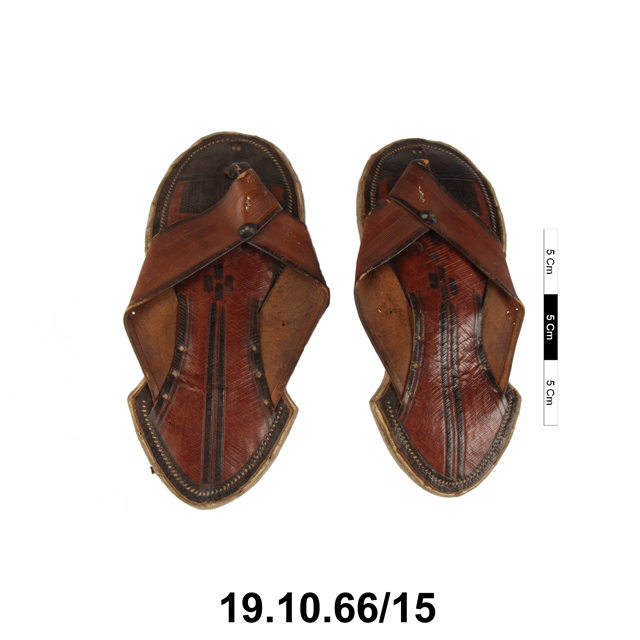
pair of sandals
Hausa leather is tawed rather than tanned. This is a dry process, consisting of adding alum or oil to the hide, usually with a mixture of salt, then stretched and softened with oils and other materials. Tawing is a laborious process, but it produces high quality leather. In the late nineteenth century very large quantities of goat hides were tawed in the city of Kano and a great many were used locally to make shoes and sandals. Hausa sandals like these were distributed very widely in Sahelian Africa by Hausa traders and were worn by people of diverse ethnic identities, see Robinson, 1896 pp. 113-4.



